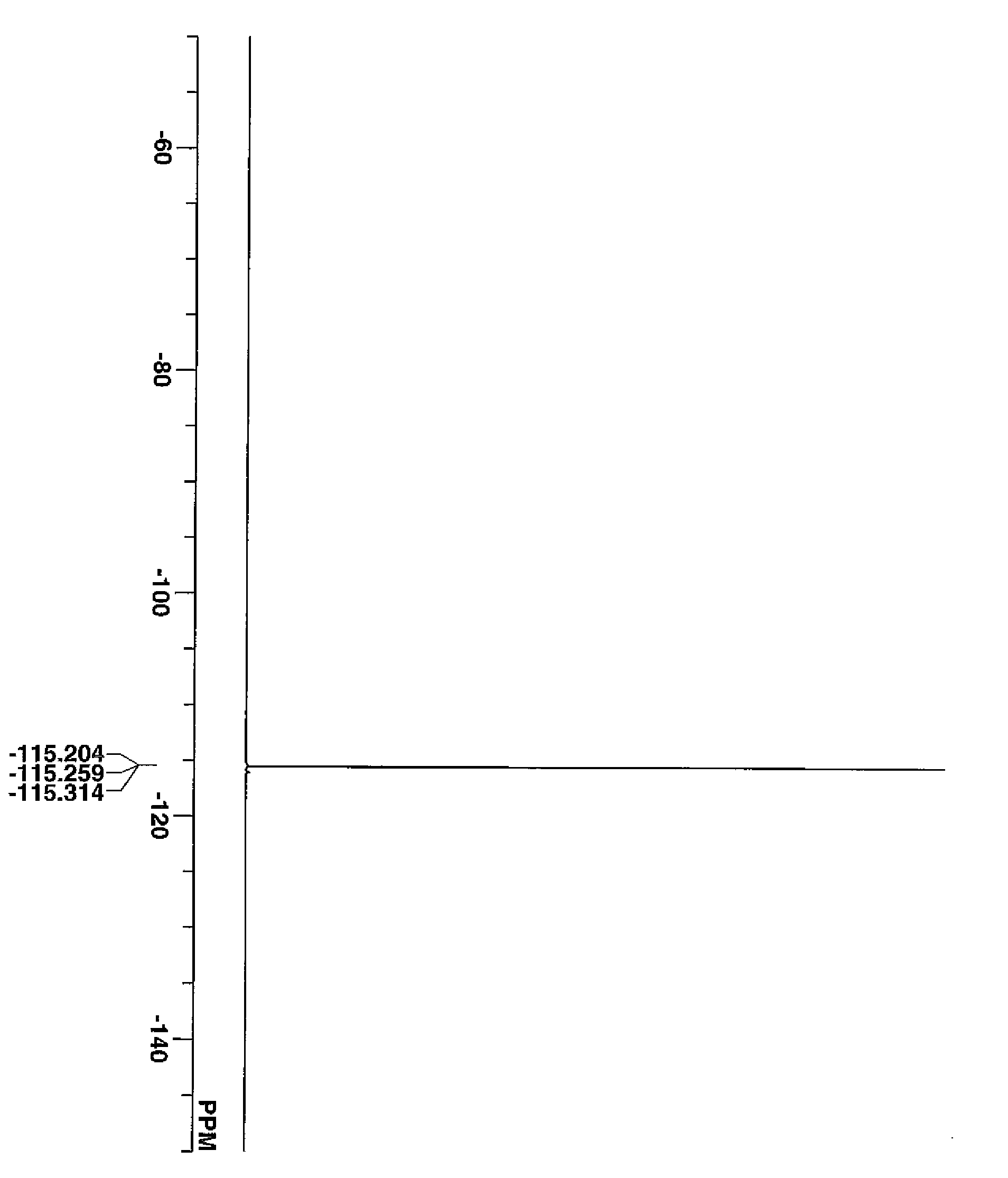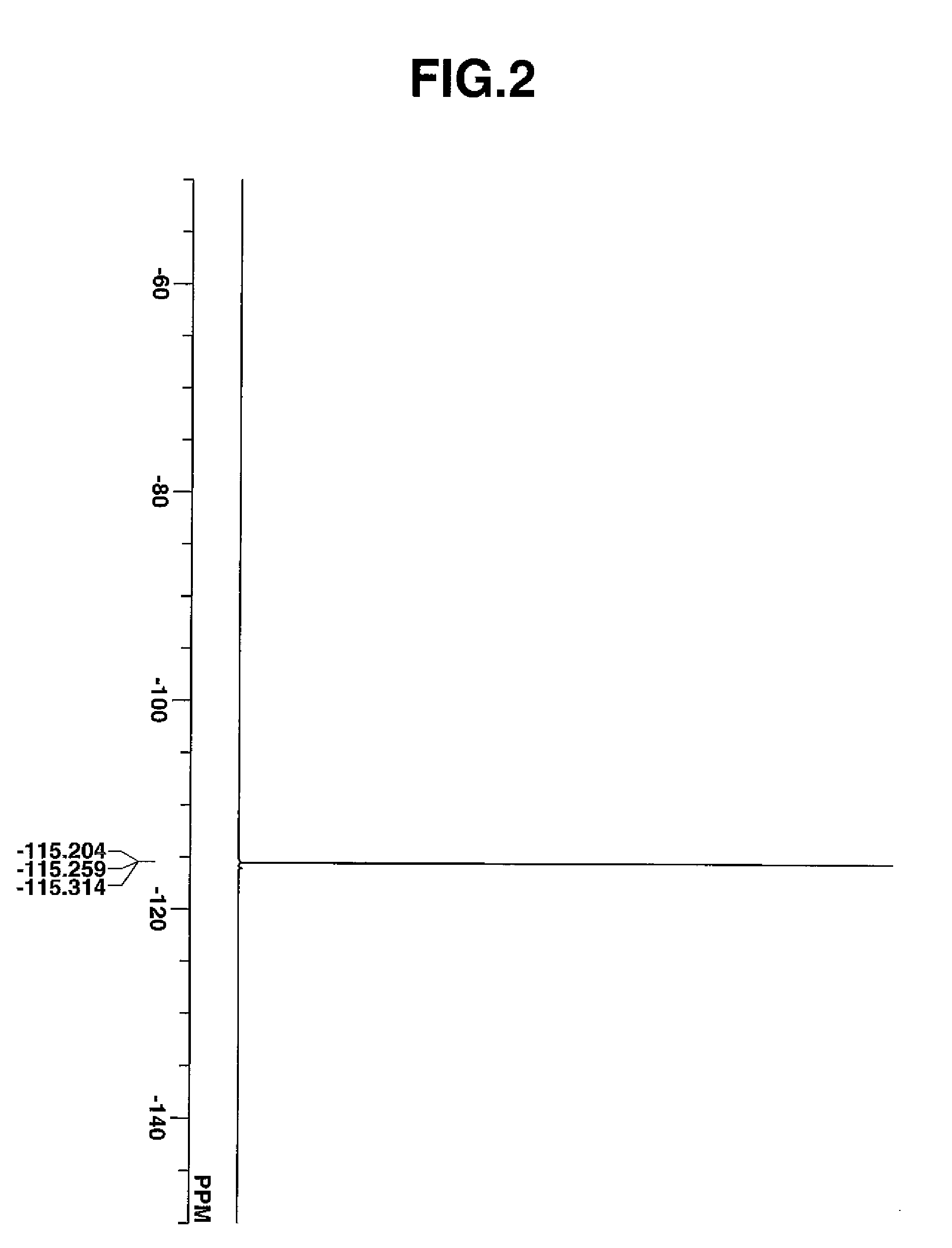Positive resist composition and patterning process
a composition and resist technology, applied in the field of positive resist composition and patterning process, can solve the problems of insufficient acid strength, failure of resolution or low sensitivity, and several reversals in the development of the pattern, and achieve the effect of reducing the size of the pattern after development, reducing the size of the hole, and more effective shrinkage of the hol
- Summary
- Abstract
- Description
- Claims
- Application Information
AI Technical Summary
Benefits of technology
Problems solved by technology
Method used
Image
Examples
example 1
[0135]Polymers within the scope of the invention were synthesized in accordance with the following formulation.
example 1-1
[0136]Synthesis of Polymer 1
[0137]In a nitrogen atmosphere flask, a monomer solution was prepared by combining 7.98 g of triphenylsulfonium 1,1-difluoro-2-methacryloyloxyethanesulfonate, 13.34 g of 4-ethyltetracyclo[6.2.1.13,6.02,7]dodecanyl methacrylate, 11.03 g of tetrahydro-2-oxo-4-furanyl methacrylate, 7.66 g of 3-hydroxy-1-adamantyl methacrylate, 1.11 g of 2,2′-azobisisobutyronitrile, and 70.0 g of methyl ethyl ketone (MEK). In another nitrogen atmosphere flask, 23.3 g of MEK was heated at 80° C. with stirring, after which the monomer solution was added dropwise over 4 hours. After the completion of dropwise addition, the polymerization solution was stirred for 2 hours while its temperature was kept at 80° C. Thereafter, the solution was cooled to room temperature. The polymerization solution was added dropwise to 400 g of hexane under vigorous stirring, after which the precipitating copolymer was filtered out. The copolymer was washed twice with a mixture of 45.4 g MEK and 194...
example 1-2
[0138]Synthesis of Polymer 2
[0139]In a nitrogen atmosphere flask, a monomer solution was prepared by combining 7.78 g of triphenylsulfonium 1,1-difluoro-2-methacryloyloxyethanesulfonate, 13.00 g of 4-ethyltetracyclo[6.2.1.13,6.02,7]dodecanyl methacrylate, 7.08 g of 4,8-dioxa-5-oxotricyclo[4.2.1.03,7]nonan-2-yl methacrylate, 12.14 g of 4-(1-(ethoxy)ethoxy)styrene, 1.11 g of 2,2′-azobisisobutyronitrile, and 70.0 g of MEK. In another nitrogen atmosphere flask, 23.3 g of MEK was heated at 80° C. with stirring, after which the monomer solution was added dropwise over 4 hours. After the completion of dropwise addition, the polymerization solution was stirred for 2 hours while its temperature was kept at 80° C. Thereafter, the solution was cooled to room temperature. The polymerization solution was added dropwise to 400 g of hexane under vigorous stirring, after which the precipitating copolymer was filtered out. The copolymer was washed twice with a mixture of 45.4 g MEK and 194.6 g hexan...
PUM
| Property | Measurement | Unit |
|---|---|---|
| Fraction | aaaaa | aaaaa |
| Length | aaaaa | aaaaa |
| Length | aaaaa | aaaaa |
Abstract
Description
Claims
Application Information
 Login to View More
Login to View More - R&D
- Intellectual Property
- Life Sciences
- Materials
- Tech Scout
- Unparalleled Data Quality
- Higher Quality Content
- 60% Fewer Hallucinations
Browse by: Latest US Patents, China's latest patents, Technical Efficacy Thesaurus, Application Domain, Technology Topic, Popular Technical Reports.
© 2025 PatSnap. All rights reserved.Legal|Privacy policy|Modern Slavery Act Transparency Statement|Sitemap|About US| Contact US: help@patsnap.com



